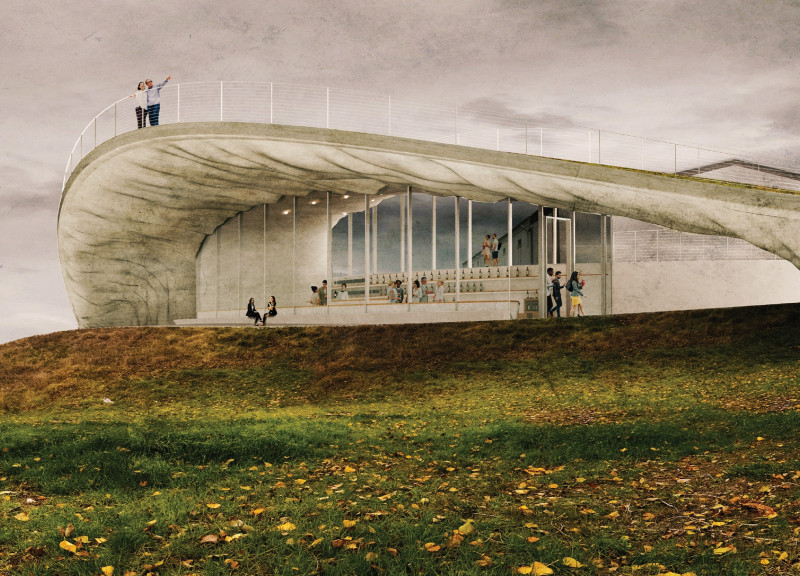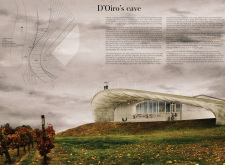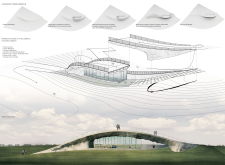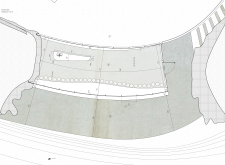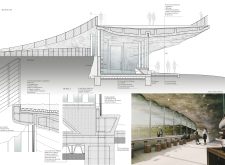5 key facts about this project
At its core, the project serves multiple functions, including residential, commercial, or community spaces, depending on the specific program it addresses. This multifunctionality is a key aspect of the design, aiming to create spaces that foster interaction and connectivity. By integrating diverse uses within a single structure, the project promotes a sense of community, encouraging residents and visitors alike to engage with one another and the space itself. The layout and organization of the project are guided by principles of accessibility, ensuring that all areas are easily navigable and welcoming to people of all ages and abilities.
The architectural design is characterized by its careful attention to materiality. A thoughtful palette of materials has been selected, each chosen not only for its functional properties but also for its visual impact. The combination of concrete, wood, glass, and steel creates a textured and layered façade that responds to the surrounding environment while offering a modern aesthetic. The use of large windows promotes natural light penetration, enriching the internal spaces and linking the indoors with the outdoors. This incorporation of natural elements speaks to the design's commitment to sustainability and environmental harmony.
One of the unique design approaches taken in this project is the emphasis on biophilic design principles. The architecture integrates green spaces seamlessly, featuring terraces, balconies, and landscaped areas that encourage a connection with nature. This inclusion of greenery not only enhances the visual appeal but also promotes environmental benefits, such as improved air quality and biodiversity. The design thus serves to foster a healthier living condition, demonstrating how architecture can play a role in promoting well-being.
Moreover, the project exemplifies a keen awareness of the local climate and geography, as the architectural form responds to factors such as sunlight orientation, wind patterns, and precipitation. This climate-responsive approach ensures that the building operates efficiently, reducing energy consumption while maximizing comfort for its occupants. By considering these environmental aspects, the project stands as a testament to responsible design that respects and works within its natural context.
The interplay between public and private spaces is another crucial element of the design. Shared areas are thoughtfully placed to encourage social interaction, while private residences or units maintain a sense of intimacy and comfort. This balance is executed through strategic planning, creating zones that delineate public access from private retreats without compromising privacy. The integration of communal facilities, such as lounges, community gardens, and fitness areas, promotes a sense of belonging among residents, further enhancing the project's appeal.
Aspects of innovation are also visible in the architectural plans and sections, showcasing the project's spatial dynamics and circulation flow. These detailed drawings reveal how different elements interact with one another and how functionalities are organized within the space. Further exploration of these architectural designs will provide readers with a comprehensive understanding of the project's intelligent layout and the thought process behind its development.
The project also incorporates modern technology in terms of building systems and smart features. The use of energy-efficient systems and advanced insulation materials demonstrates a commitment to sustainability and offers long-term operational savings. Implementing technology within the architecture allows for better management of resources and enhances the overall user experience, using smart solutions that add convenience to daily living.
In summary, this architectural project is a confluence of thoughtful design, community engagement, and environmental sensitivity. Its unique approach to blending diverse functions, incorporating green elements, and prioritizing user well-being makes it a noteworthy addition to contemporary architecture. The detailed architectural plans and sections highlight the meticulous thought that has gone into shaping this project. Readers are encouraged to explore the presentation further to gain deeper insights into the architectural designs and ideas that make this project a significant example of modern architecture.


